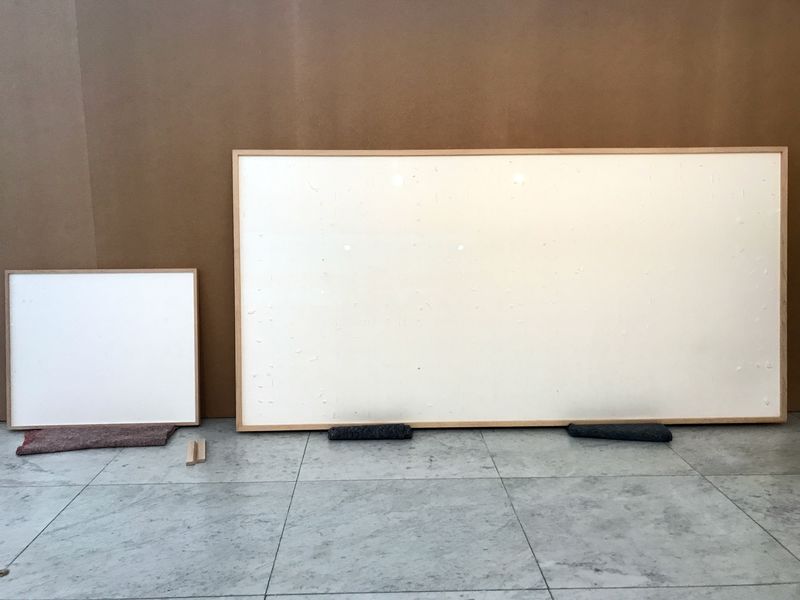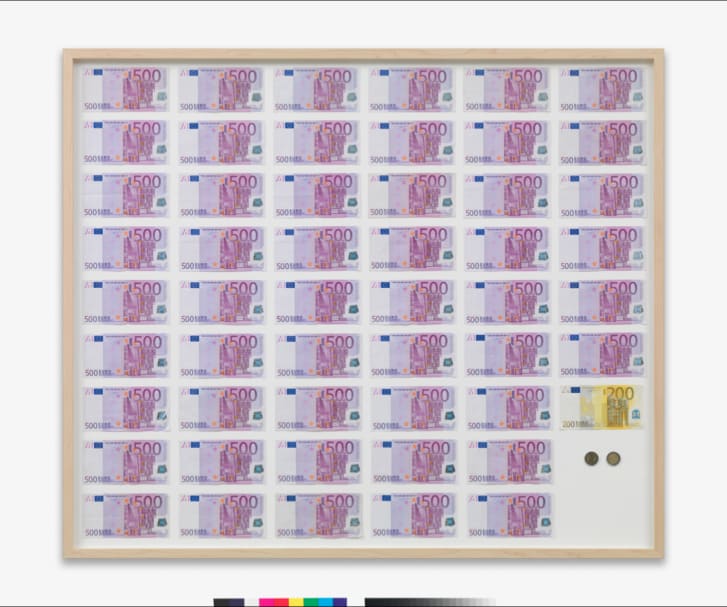
A mirror coated in red paint, a banana stuck to the wall with duct tape, and an invisible sculpture — these are just a few of the abstract artworks that have recently sold for astounding amounts. Now, Dutch artist Jens Haaning has taken the genre to a whole new level. His aptly named "TAKE THE MONEY AND RUN" masterpiece, comprising two empty frames, have set a local museum back 534,000 Danish krone ($84,000)!
Earlier this year, the Kunsten Museum of Modern Art in Aalborg, Denmark, commissioned Haaning to create two pieces for their upcoming "Work It Out" exhibit. Per their written agreement, the artist would use the 534,000 Danish krone lent to him by the museum to reproduce two of his previous artworks about labor. The first, An Average Austrian Year Income, displayed euro bills on a canvas in a frame, while the second, focusing on Danish incomes, did the same using krone notes. But when the museum opened the boxes the artist sent prior to the exhibit's opening on September 24, 2021, they found two blank frames titled "TAKE THE MONEY AND RUN."

The museum officials admit that Haaning's artwork is thought-provoking and unique and have even included the pieces in the exhibit. But museum director Lasse Andersson expects the artist to fulfill his contractual obligation and return the money when the exhibition ends in January 2022. "I absolutely want to give Jens the right [to say] that a new work has been created in its own right, which actually comments on the exhibition we have," Andersson told Danish radio. "But that is not the agreement we had."
However, Haaning thinks his artwork is perfect for the exhibit, which examines the relationship between art and labor. He argues that the empty canvases highlight the unfair working conditions of many artists, including himself. The 56-year-old says the museum's 15,000 krone ($2,300) stipend for the artworks was not even enough to cover his costs. "The work is that I have taken their money," he told Danish radio. "It's not theft. It is breach of contract, and breach of contract is part of the work."
Resources: the Guardian.com, CNN.com, Artnet.com
